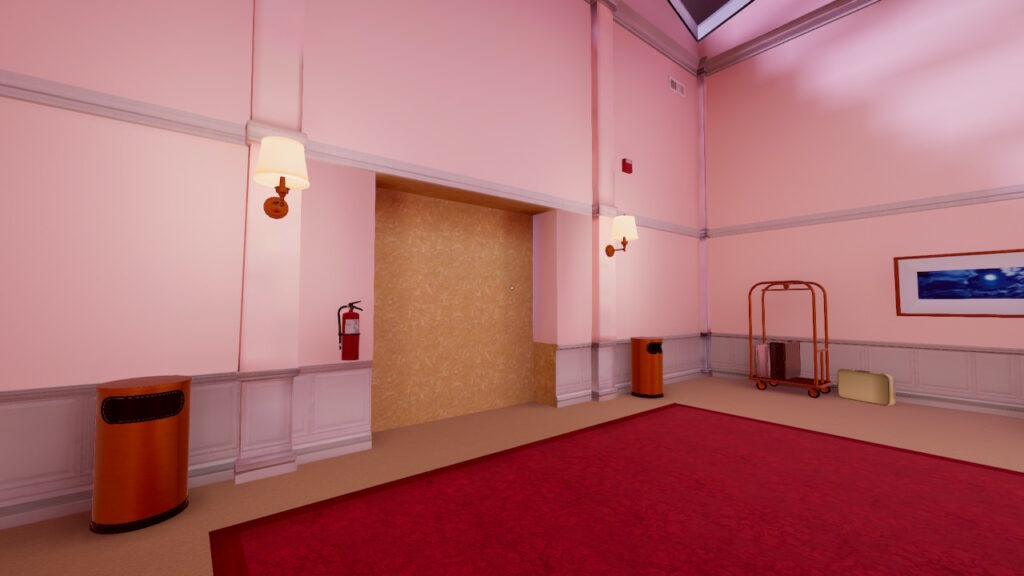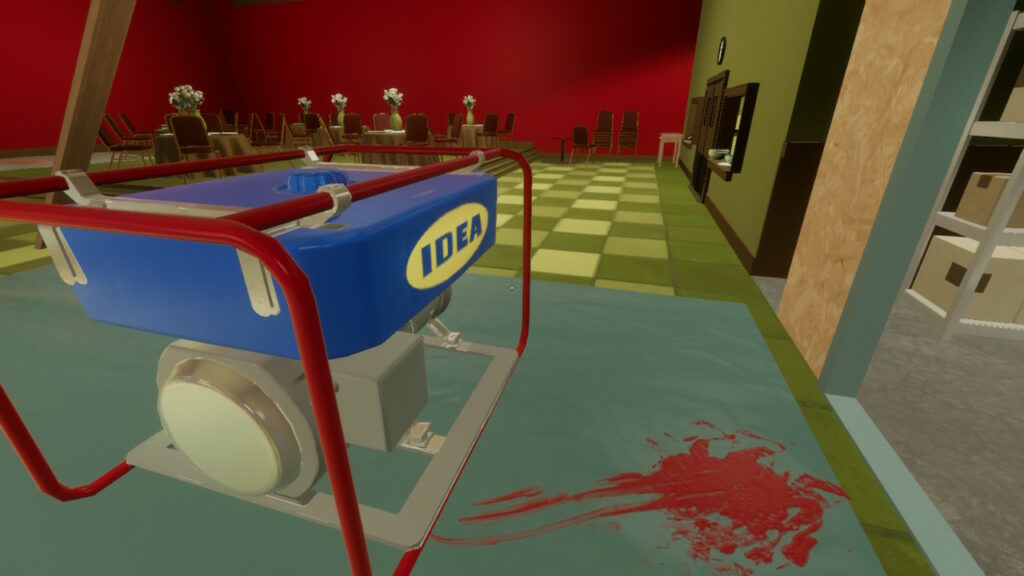
Developer: Pillow Castle
Publisher: Pillow Castle
Platform: Switch, PC, PS4, Xbox One, PS Vita
Tested on: Switch
Superliminal – Review
Ever wonder what would happen if you mixed Christopher Nolan’s movie Inception with the Portal series? The result might look somewhat like Superliminal, a game from Pillow Castle that was released on PC last year and has now made the jump to consoles. In Superliminal, players are tasked with escaping from several layers of dreams. We took the plunge to find out whether the game is a beautiful dream or a nightmare.
Although Superliminal isn’t really a story-driven game in the classical sense, developer Pillow Castle still implemented a narrative framework to give players something to hold on to as they make their way through the frantic puzzles. The game opens with a trailer for the Pierce Institute, a therapeutic center that attempts to cure depression through Somnasculpt technology, which allows patients to interact within their own dreams and tackle their life problems. The player takes on the role of an unseen patient undergoing one of these treatments, known as the I-LIDS program.
Things go wrong though, and the patient gets stuck within several layers of dreaming. In order to wake up, they must make their way back through each dream layer. While this is happening, the I-LIDS AI will comment on the player’s decision over an intercom, and dr. Pierce himself will tell the player what steps he is undertaking to ease their waking up through radios that are placed at key points. For what it’s worth, the short monologue bits are written in a dark but humorous manner, and they add a layer of immersion to the game, but there isn’t any real meat to the narrative. The game’s ending -which we won’t spoil here- felt rather cheesy too, so if you’re looking at Supernatural because the story setting intrigues you, you’ll end up disappointed.
Graphics
Although Superliminal doesn’t boast the most impressive graphics, there’s still a lot of appeal to its presentation. Things were kept deliberately simple because adding too much detail here would needlessly complicate the puzzles, as many of these are solved by looking at things from a certain perspective. Naturally, the rooms are kept as bare as possible where suitable, giving the game a clean and sterile feel in the parts that are supposed to be ‘normal’ simulation environments. Meanwhile, you’ll often go ‘behind the scenes’, where things look gritty and dirty. The contrast between these two types of environments is quite stark, although this effect is mostly achieved through lighting. Unfortunately, things don’t fare as well when at a certain point in the game the power goes out. The few bits that are then bathed in safety lights really emphasise the lack of detail displayed here, breaking the suspension of disbelief.
Sound
Just like how there are two types of environments, the game also employs two soundscapes. The simulation environments have soft piano music playing, with a filter applied so that it sounds like the music is coming through speakers. Meanwhile, the behind-the-scenes areas only offer low humming of machinery. These soundscapes are used to great effect, as they underline the difference between the two areas. The piano music feels awkward and unnatural and can really get under your skin as you’re trying to focus on a puzzle. This is ultimately a good thing as it underlines the feel that this is an environment that you don’t want to be in. Meanwhile, the absence of music in the other areas makes you feel like rather than not wanting to be there, you outright shouldn’t be there. Rounding out these soundscapes is that of the I-LIDS AI, a robotic female voice that gives you stern warnings and berates you for making the wrong choices, all in the most neutral way possible, and the smooth and calming voice of dr. Pierce, who attempts to assure you that everything is going to be okay.
Gameplay
Behind Superliminal’s intriguing presentation is a clever environmental puzzle game that continuously tries to surprise players. The game’s levels are presented as dream layers, each a dream-within-a-dream, where an alarm clock “wakes” you at the start of each level. You’re then tasked with finding your way to the elevator through a series of rooms and corridors, which is easier said than done, as each room will present you with a puzzle to solve. These puzzles often require you to let go of conventional logic and think outside the box. You’ll find yourself bending the laws of physics and perspective in ways that would be impossible outside of the dream world. Take interacting with objects, for example.
In most cases, you’re able to manipulate the size of interactable objects by grabbing them and placing them at a different angle. It’s a mechanic that is nearly impossible to explain without seeing it in action, but once you figure it out, it quickly becomes second nature. Even so, figuring out the core mechanics isn’t enough to make your way to the end of Superliminal. The game constantly attempts to fool the player by bending its own rules and subverting expectations. As there is very little explanation whenever you encounter a new mechanic, you’re often left to your own devices when figuring out how to clear a room.
Luckily, Superliminal never puts any pressure on the player. There are no lives, no time limits and no enemies. Despite the female AI often warning the player, ultimately, there’s no need to worry about dying, and the game’s challenge is purely in figuring out how to progress on to the next room. Despite the absence of death, the game still has a very Portal-esque feeling to it and chances are that if you enjoyed Valve’s iconic series, then Superliminal is right up your alley. Of course, any similarities to Portal are mostly due to how the game feels, rather than how the puzzles and mechanics work. Almost every puzzle in Superliminal is based on forced perspective and optical illusions, although some of them involve you going through a door, then picking up that same door from another viewpoint and placing it elsewhere before returning through it.
Superliminal’s biggest flaw is probably that you’re not getting a lot of content for your money. The game isn’t the easiest puzzle game to complete, but most people will be able to reach the end of the game in around four hours. As the puzzles don’t change between playthroughs, you’re left with zero replayability once you figure out how the game works. That’s not to say it’s a bad game, far from it, but you might want to consider a sale before you splurge on the game.
Conclusion
Although it’s a short experience overall, Superliminal is a real treat if you’re into environmental puzzle games. The game constantly challenges you to think outside the box and look at things from a different perspective -both literally and figuratively. We do recommend waiting until you can pick this one up at a lower price point, but if you can get it for €10 or lower, it’s a must-buy.
Superliminal - Review,









No Comments